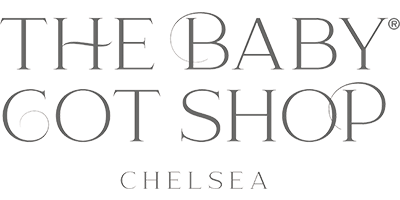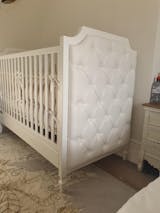As a new parent, the changing unit is (or will be) one of the most important and frequently used pieces of furniture in your home, as it will see constant use from the moment your baby arrives. Given its central role in your daily routine, it is crucial that you get it right. But how do you get it right? What exactly makes the perfect changing unit? Read on to find out the things you should consider when selecting a changing unit.
Sturdy and Stable Construction
In selecting your baby's changing unit, safety must be the top priority. After all, this is where they will be spending a significant amount of time, and you need to have complete confidence that the furniture is sturdy, stable, and won't put your child at risk. Look for changing units constructed from high-quality, durable materials like solid wood or heavy-duty engineered wood. Avoid lightweight, flimsy options that could potentially tip over, even when your baby is squirming about. The base should be wide and weighted, providing a secure foundation that won't wobble or sway. Equally important are the moving parts. Any drawers, shelves, or changing surfaces should glide smoothly and close gently, without slamming shut unexpectedly. Check that all hardware, like screws and hinges, are securely fastened and won't come loose over time.
Ample Storage
Newborns require a surprising amount of stuff — nappies, wipes, creams, spare clothes, and the list goes on. A well-designed changing unit will provide ample storage space to keep all your essentials within easy reach, helping you stay organised and efficient during nappy changes. Look for changing units with roomy drawers, shelves, or cubbies that allow you to neatly store and arrange your changing supplies. Ideally, you want to be able to access everything you need without having to constantly run around the nursery searching for items.

Comfortable Height
The height of your changing unit is a crucial consideration, both for your baby's safety and your own back health. The ideal height allows you to tend to your baby without having to bend or strain uncomfortably. As a general guideline, the changing surface should be at about waist level when you are standing. This height helps prevent back pain and makes the process of nappy changing much easier on your body. Avoid units that are too low, as this can force you to hunch over, or too high, which could require you to lift your baby up uncomfortably.
Some changing units offer adjustable height options, allowing you to customise the fit as your child grows or to accommodate users of different statures. This flexibility can be particularly helpful if multiple caregivers will be using the changing unit. In addition to the overall height, also consider the depth of the changing surface. A shallower unit may be better suited to smaller nurseries, while a deeper changing area provides more stability and room for your baby to move around comfortably.
Thoughtful Design
In picking the perfect baby changing unit, design details matter. Look for well-thought-out features that make nappy changing more pleasant, efficient, and safe for both you and your baby. A raised edge around the changing surface, for instance, helps prevent your baby from accidentally rolling off. Integrated hooks, rails, or shelves are handy for keeping frequently used items, like nappy bags or spare outfits, within easy reach. Some changing units even incorporate speciality storage compartments, such as a cubby specifically for storing clean nappies. Other design elements to consider include the type of changing pad (look for waterproof, wipeable options) and the presence of safety straps to secure your baby. A properly designed unit can make a significant difference in your everyday changing routine, helping to streamline the process and provide greater comfort.
Cleaning Ease
Thing is, nappy changing can get messy. You'll want a changing unit that is simple to wipe down and maintain, allowing you to quickly and efficiently clean up any spills or accidents. Opt for a smooth, non-porous surface like laminate, high-gloss paint, or even stainless steel. These materials won't absorb stains or odours and are a breeze to wipe clean. Avoid designs with hard-to-reach crevices where grime can accumulate.
Consider the changing pad as well. Look for a waterproof, easy-to-wipe option that can be quickly sanitised between uses. Some pads even feature contoured edges to help contain any messes. The easier your changing unit is to clean, the quicker you can get back to giving your baby the care they need. This is especially important in those early months when nappy changes can feel unending. A low-maintenance changing station will save you time and hassle, allowing you to focus on your baby rather than scrubbing the furniture.
Versatility and Longevity
While your changing unit will see the most use during the newborn and infant stages, it is worth considering how long it will serve your family. Look for options that can transition and grow with your child, helping you maximise your investment and get greater value. Some changing units, for instance, can be easily converted into a dresser, bookshelf, or other piece of functional furniture once your baby outgrows nappy changes. Convertible changing units not only extend the lifespan of the unit but also allow you to seamlessly integrate it into other areas of your home as your child's needs evolve.
Aesthetic Appeal
While functionality should be the top priority when choosing a changing unit, the visual appeal of the piece is also an important consideration. After all, it is a prominent piece of furniture that will be a focal point in your nursery, so you'll want it to enhance the overall aesthetic of the space. Fortunately, there is a vast array of changing units available in a wide range of finishes, colours, and designs to suit any aesthetic. From sleek, modern changing unit designs to more traditional, wood-toned units with ornate detailing, the options are endless. Take the time to browse different styles and consider how the changing unit will complement the existing decor and colour palette of your nursery. You may even want to coordinate the changing unit with other nursery furniture, like the cot or dresser, for a cohesive, visually appealing look.

In the end, the changing unit is more than just a functional piece of furniture. It is where you will bond with your baby while providing them comfort, care, and security during those early months. Investing in a well-made, solidly built changing unit gives you invaluable peace of mind during those nappy-changing sessions. Keep these consideratios in mind, and you'll be well on your way to selecting a changing unit that will serve its purpose perfectly.
P.S.: We understand that at this point, a changing unit that is as functional as it is as safe and aesthetically impressive will be a very handy addition for you. We have the perfect place for you to make your pick. Check out our collection of the very best changing units here. And, there's a curation of other durable and functional nursery furniture pieces for you here too. You'll be giving your baby a treat they deserve.
P.S.S.: Now you know what makes the perfect changing unit. Want to know what makes the perfect baby cot? Find out here.


